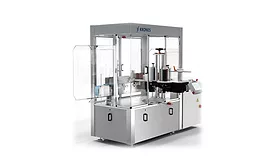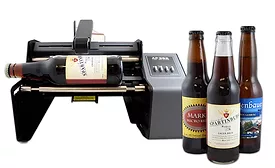Home » Keywords: » pressure-sensitive labels
Items Tagged with 'pressure-sensitive labels'
ARTICLES
Primera offers semi-automatic labeling solutions for diverse containers
Equipment facilitates fast label application on wine bottles and cans
February 24, 2020
J. Lohr Vineyard Series tier releases new packaging
Wine series uses pressure sensitive labels, fanciful script
October 21, 2019
Modular labelers support beverage labeling needs
Labeling equipment manufacturers design equipment to support SKU growth
September 9, 2019
Packaging furthers The Dreaming Tree’s environmental commitment
Labels made from recyclable paper
May 1, 2018
Premium beverages, sustainability drive labeling material trends
Matte finishes and new textures dominate labeling material trends
September 16, 2015
Suppliers create eco-friendly, durable beverage packaging solutions
New Videojet ink designed to withstand variable environments
April 15, 2015
Labels help beverages stand up to the competition
Upscale shrink-sleeve, pressure-sensitive and paper labels support product differentiation
September 15, 2014
Elevate your expertise in the beverage marketplace with unparalleled insights and connections.
Join thousands of beverage professionals today. Shouldn’t you know what they know?
JOIN NOW!Copyright ©2025. All Rights Reserved BNP Media.
Design, CMS, Hosting & Web Development :: ePublishing





